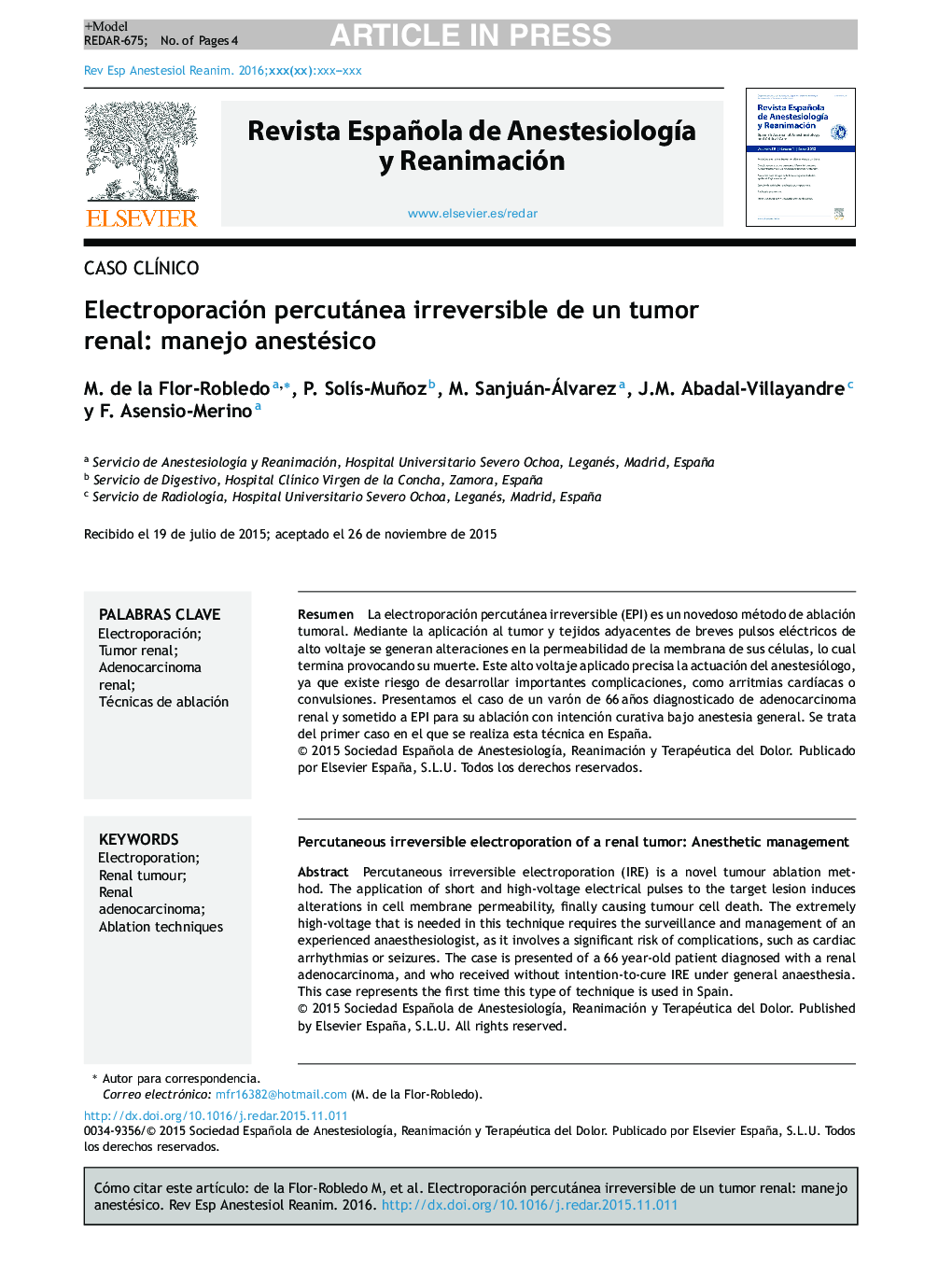| Article ID | Journal | Published Year | Pages | File Type |
|---|---|---|---|---|
| 2768189 | Revista Española de Anestesiología y Reanimación | 2016 | 4 Pages |
Abstract
Percutaneous irreversible electroporation (IRE) is a novel tumour ablation method. The application of short and high-voltage electrical pulses to the target lesion induces alterations in cell membrane permeability, finally causing tumour cell death. The extremely high-voltage that is needed in this technique requires the surveillance and management of an experienced anaesthesiologist, as it involves a significant risk of complications, such as cardiac arrhythmias or seizures. The case is presented of a 66 year-old patient diagnosed with a renal adenocarcinoma, and who received without intention-to-cure IRE under general anaesthesia. This case represents the first time this type of technique is used in Spain.
Keywords
Related Topics
Health Sciences
Medicine and Dentistry
Anesthesiology and Pain Medicine
Authors
M. de la Flor-Robledo, P. SolÃs-Muñoz, M. Sanjuán-Álvarez, J.M. Abadal-Villayandre, F. Asensio-Merino,
